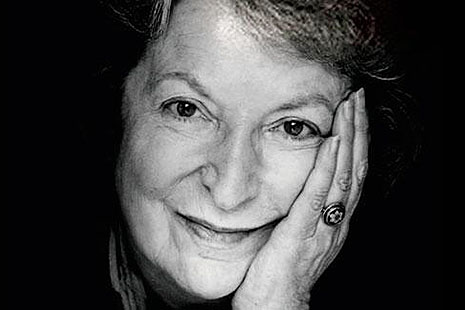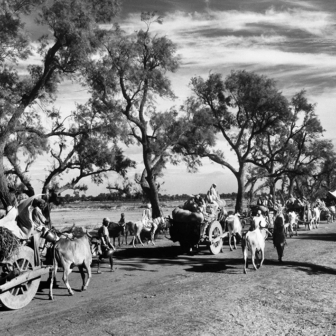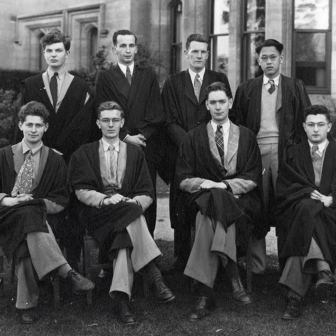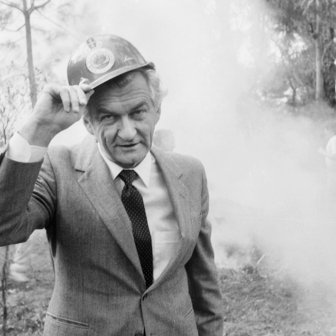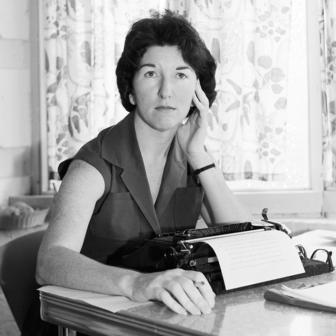Pauline Kael: A Life in the Dark
By Brian Kellow | Viking | $39
“Her existence revolved around going to the movies, talking about movies, lecturing on movies, being interviewed about movies.”
That sentence from Brian Kellow’s biography might, indeed should, have added “and endlessly writing about movies” for that is how most of us came to know about the enfant terrible, and in some famous instances the femme fatale, of film criticism. And from what one reads here, that was a good place to know her: closer contact could have been a prickly business. She might well have been the best-known movie critic of the latter half of the twentieth century, but you’d need to be on the watch if she took against you – or if she took you up.
The other point to be made in relation to Kellow’s remark is that, as far as one can tell from his assiduously researched account, there wasn’t much room for anything else in her life. Daughter Gina, product of a brief liaison with film-maker James Broughton, seems to exist mainly to chauffeur her mother, though Kael felt real affection for Gina’s son; there isn’t much sense of family life, either of Pauline’s with her Polish migrant parents or of her home with Gina, a place often filled with acolytes making the most of their time of favour before it turned to obloquy. And there’s not really much sense of some of the tumultuous changes that the United States – the world in fact – was undergoing, unless these surfaced in a movie that caught her attention. Matters such as feminism or Vietnam or gay rights, matters like these and others that surely made a huge impact on contemporary culture, have to struggle to be heard in Kael’s life and her biography. The movies were the focus of her attention: she’s said to have liked listening to music but there’s really no suggestion about what it meant to her. And what did she read? What did she make of the theatre of the time? She’s not one of those film critics who effortlessly place film in the context of the arts and culture at large as, say, London’s Philip French magisterially does.
When asked if she’d ever thought of writing a memoir, she replied that she’d already written it. She meant that what her significant life had been was already on display in a lifetime’s published reviews, subsequently republished in weighty book collections. The very titles of these anthologies point us in the direction she intends, starting provocatively with I Lost It at the Movies and including such other similarly resonant titles as For Keeps, Going Steady, Kiss Kiss Bang Bang and When the Lights Go Down. Yes, it’s possible to see a sort of ongoing memoir there, and in her life that’s where the action was. I don’t mean to suggest that there is nothing in her life but the movies, but that – as with how Hollywood dealt with the Depression of the 1930s – is how she came to terms with what else was going on.
She became undeniably powerful – as film critics go, that is. So what kind of a critic was she? “Fearless” is one word that comes to mind, but sometimes one wonders if this is because she simply didn’t see beyond what her instinct told her as she watched the flickering screen. Certainly she valued instinct over intellect in her appraisals. The fact that she almost boasted of never needing to see a film more than once may support this: what got her going was the gut reaction as she watched, not what she might have recollected in tranquillity. But “fearless” she was, in either putting the boot in to big prestige hits like Dr Zhivago or The Sound of Music, or making clear her preference for films that touched a raw nerve. What she wanted above all at the movies was “a good time,” prizing this over “the art of the film,” and this led her, in Kellow’s words, to “encourage audiences to respond to what they genuinely enjoyed – not to second-guess themselves as they might have been taught to do in school.” In her words, “It’s preposterously egocentric to call anything we enjoy art – as if we could not be entertained by it if it were not.”
What is surprising about Kael’s reviewing is how little emerges of what makes movies movies. That is, she shows virtually no interest in, among other matters, the visual aspects or the editing or the soundtrack. As Kellow says, “What she was interested in was plot and character... She was so focused on people and the way the story was told as a drama that she would neglect the things that would make movies interesting.” And he quotes enough of her prose to give us a real sense of her flavour.
It was really her long-running stint at the New Yorker that she will be remembered for. She shared the film slot with the English critic Penelope Gilliat on a rotating half-yearly basis and Kael persistently badgered the editor, William Shawn, to let her displace Gilliat and to take over the job full-time. This finally happened in 1980, by which time she’d established herself as a sort of tigress whose pounces no one could predict with any certainty or safety. The one thing readers could be certain of was that she was a woman of very strong likes and dislikes, and this no doubt helps to account for her utter readability.
She doted on certain actors – Barbara Stanwyck and Barbra Streisand, for instance – and used her critical perch to warble the praises of such directors as Sam Peckinpah and Robert Altman. In fact, as far as some film-makers were concerned she took serious risks in getting to know them personally and then all but proselytising on their behalf. She opened herself to accusations of letting her concern for the careers of various favourites surface in her reviews, but critical objectivity would never have been one of her priorities. Unlike most critics, she wanted be “in” with film-makers, and if this skewed her judgement that was someone else’s problem. In fact, she had a stint in Hollywood when Warren Beatty “presented her with a persuasive argument for heading west. Wouldn’t it be much better, instead of pointing out where movies had gone wrong after they had been made, if she could perform the same function by analysing the scripts and advising on casting before production began?” It didn’t work out and Kellow makes quite compelling reading of the aborted project.
How do her reviews and more wide-ranging criticism read now? In general, they strike me in much the same way as I recall reacting when I first read them in the various collections. They are so intensely personal in their responses, so quirky and instinctual, that at times it is quite difficult to be sure just what she meant. But, for all that, they remain immensely readable. Even in one of her less outrageous pieces, her review of that echt turn-of-the-decade comedy, Bob & Carol & Ted & Alice, you have to work at her diction to catch her critical drift: she calls it “a slick, whorey movie,” loves director Paul Mazursky’s way of “letting the rhythm of their interplay develop,” feels that he has “taken the series of revue sketches on the subject of modern marital stress and built them into a movie by using the format of situation comedy, with its recurrent synthetic crises,” and praises one of its stars, Dyan Cannon, who “looks a bit like Lauren Bacall and a bit like Jeanne Moreau, but the wrong bits.” Her prose carries me along even when I’m not perfectly certain what she has in mind.
EVEN if Kael is not greatly concerned about the large cultural changes going on in American life during the period of her incumbency at the New Yorker, a strong sense of American film history does emerge in her writing. Maybe she is only concerned about big political and cultural issues insofar as they surface in the movies, but even that constitutes a potent element of cultural history. She came to prominence when American films were undergoing radical change, when new people were beginning to dominate the movie scene before and behind the camera.
Films such as Bonnie and Clyde and Easy Rider were grist to her mill in the way they shook up the conventional expectations of Hollywood films. As Kellow writes, “One of the many ways that Bonnie and Clyde ushered in a new era in American moviemaking was with its stunningly direct portrayal of violence and its effect on our lives.” Kael agreed, insisting that “the whole point of Bonnie and Clyde is to rub our noses in it, to make us pay our dues for laughing. The dirty reality of death – not suggestions but blood and holes – is necessary.” In extolling the radical virtues of Easy Rider, she claims that “the movie attracts a new kind of ‘inside’ audience, whose members enjoy tuning in together to a whole complex of shared signals and attitudes.” If she responds with senses-alert acuteness to such trend-setting projects, or to the beauties of Robert Altman’s eloquent western, McCabe & Mrs Miller (“a beautiful pipe dream of a movie – a fleeting, almost diaphanous vision of what frontier life might have been”), she can be unduly dismissive of, say, British film of its pre–new wave era (“moribund for years... what Britain mostly produced were tame costume dramas and cosy mysteries” – simply factually inaccurate). And though she professes to be excited by both the French and British new waves, she can’t afford much time for them: she is just too preoccupied with what’s happening in the American industry.
Kellow has done justice to the work of Kael the writer, the maverick, the controversialist. He makes the reader aware that movies were what life was about for Kael and this led to a minimisation of concern with other matters. His biography registers this kind of emphasis. In the most obvious sense, this is felt in the very ample quoting from her reviews and longer pieces, so that there is no question of our not being aware of the kind of writer she was, whether she’s luxuriating in the latest Altman or taking pot shots at her bête noire, critic Andrew Sarris, whose auteurist proclivities she disdained, volubly and vehemently. Essentially, then, Kellow concentrates on what made her famous. This means that he avoids, for instance, a long biographical introduction about her ancestors’ Polish history; it means too that he makes pretty short shrift of her Jewishness, which never seemed to interest her very much; and it also means that he doesn’t go in for the sort of dirt-dishing that so often comes with the biographical territory.
Perhaps there wasn’t much dirt to dish, and again this may be a function of her spending most of her working life in darkened projection rooms or belting away at a typewriter. She had plenty of acolytes, some of whom teetered on the verge of sycophancy and others who veered away into enemy camps. She liked good company and if you stopped being that she’d probably have dumped you. Her daughter is a shadowy figure who sometimes emerges more as a lady-in-waiting than as her only child. There are some large generalisations, from both Kael and Kellow, but most of the time his placid style (sometimes too flat – “[Judith] Crist’s taste in films was generally very good”) complements what theatre critic Robert Brustein said of Kael’s: while conceding that she was “always entertaining” he ventured that “you may get frazzled by all the feverish energy, flashing like St Elmo’s fire, around so many ephemeral works.” As my grandchildren would say, I so know what he means. •
